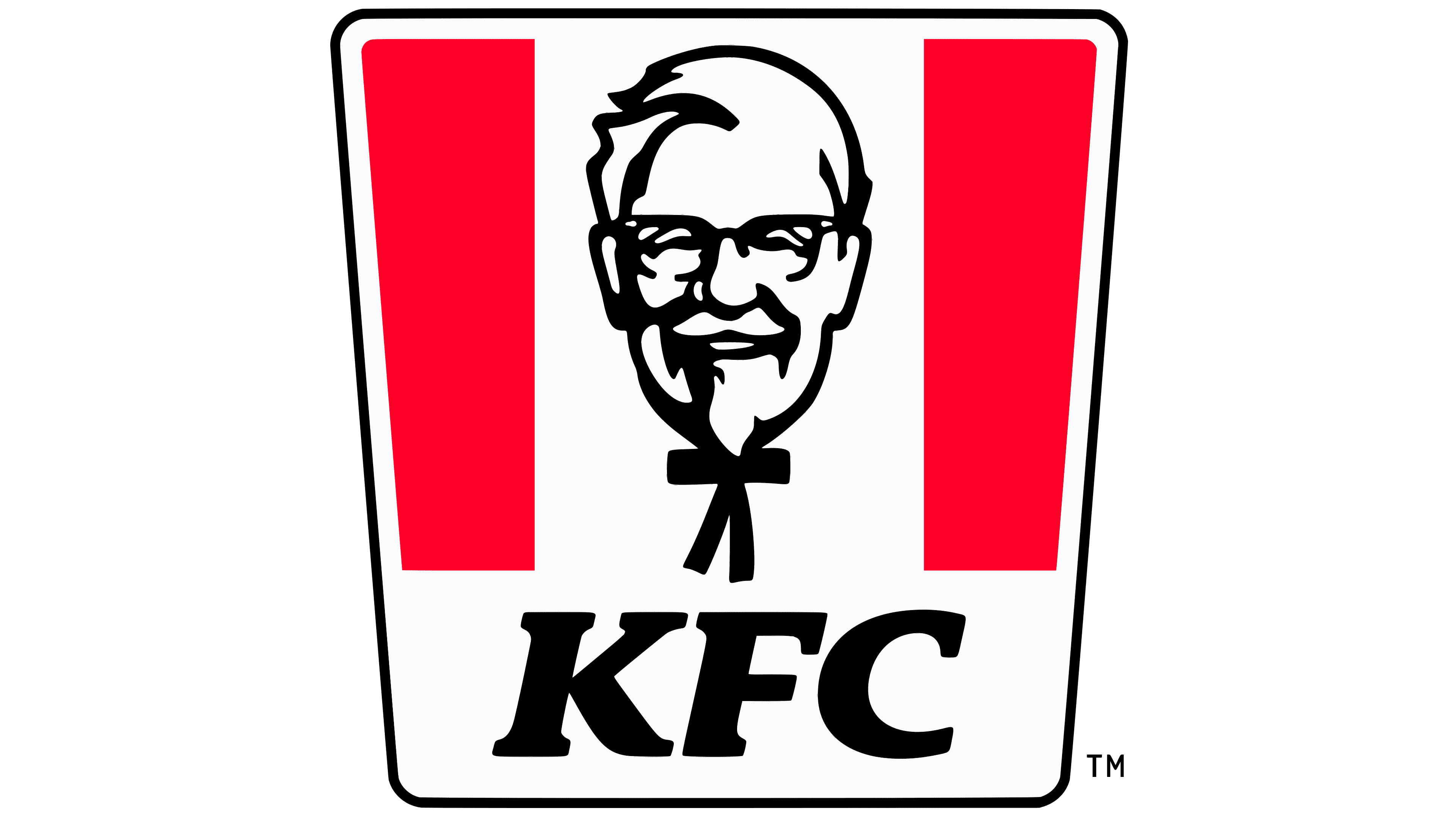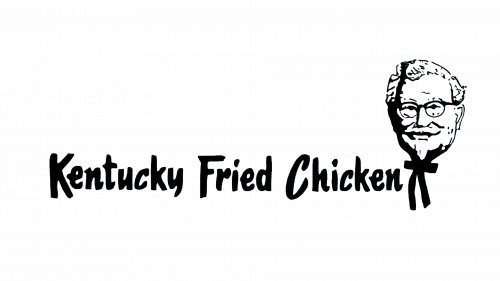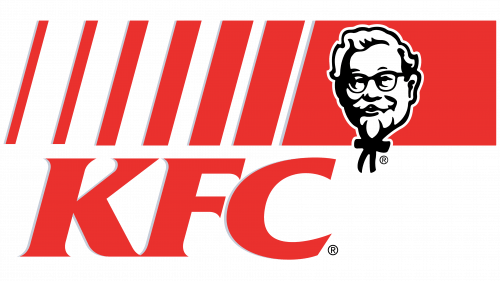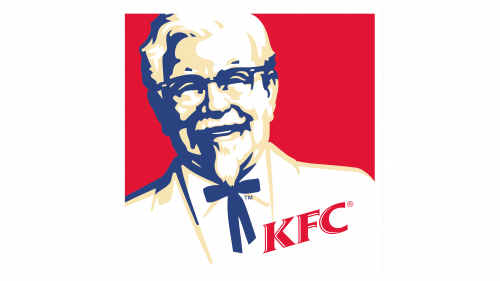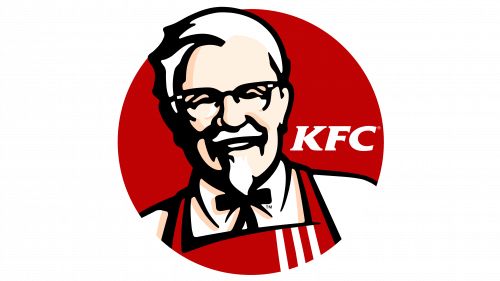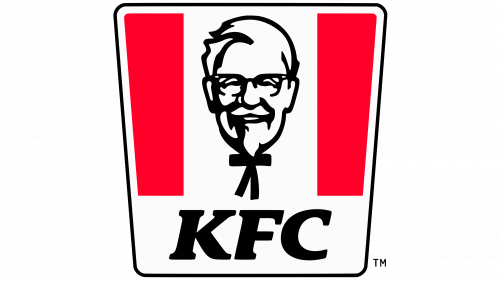KFC Logo
KFC is the second-largest fast-food chain in the world (after McDonald’s, of course). It’s also amongst the oldest living one – being operational in earnest since 1952. The main ingredient in many of their dishes is chicken, although they also bet heavily on additional ingredients, such as sauces and spices.
Meaning and History
It’s no secret that KFC is called so because the founder Harland Sanders was appointed the Colonel of Kentucky shortly before the chain started functioning. He liked the title so much, he started to dress up and present himself as a typical Southern gentleman. His likeable appearance and demeanor also made him into a mascot for the company.
1954 – 1959
The first logo from 1954 exhibits a playful and inviting aesthetic with the brand name “Kentucky Fried Chicken” handwritten in a distinctive, casual script that suggests warmth and approachability. The inclusion of sketched chickens on either side of the text adds a touch of whimsy and personifies the product. The chickens appear animated and comical, reinforcing the brand’s connection to its core product while maintaining a friendly image. The simplicity of black ink on a clean background gives this logo a classic, timeless feel while also allowing for versatility across various media and platforms.
1959 – 1978
Moving to the second logo, the design from 1959 simplifies and refines the earlier concept, focusing solely on the typography. The brand name is still handwritten, retaining the brand’s personal touch, but the font style here is bolder and more uniform, projecting a clearer and more confident brand identity. The characters have a brush-like quality, suggesting the handcrafted nature of the food and the care put into its preparation. The removal of the chickens from the design streamlines the logo, emphasizing the brand name and making it more straightforward for reproduction and recognition.
1965 – 1978
That’s a classic KFC logo. The name is written in one line to appear almost hand-written. Just to the right, the designers put the head of the man himself, very detailed (down to the wrinkles) and smiling joyfully. They pretty much used this drawing until 1997, although the versions varied in detail.
Naturally, the whole image was black.
1978 – 1991
This time all the elements remained, although the order changed. They rearranged the text into three lines, made it bigger and changed the font to make it look less like written by hand, but still fluid and soft enough as to not confuse people into thinking they were a serious restaurant chain.
They also kept the head, although it was now slightly smudged to reduce the cost of drawing it each time. In addition, the order wasn’t really pre-set. For instance, the restaurant exteriors often put the writing in one line (and naturally colored it white), although the regular layout still appeared as intended on TV and newspapers.
1991 – 1997
1991 saw the company introduce the first truly colored logo. The name was reduced to just an acronym (KFC). The characters also became thicker, more official and angular, and also red. This writing style pretty much persisted until even now.
The Colonel was also featured, naturally. They kept the head from the previous incarnation, but painted it blue. They also put it onto a red trapezoid. Several other rectangles were sprouting from its (trapezoid’s) left side in decreasing sizes, for some reason.
1997 – 2006
This version was the first to feature the modern depiction of Colonel Sanders. His face now found itself a pair of shoulders, although it still wore a tie, as before. KFC made him the most prominent part of the logotype for this version (and others that followed). He was still drawn in light blue.
Right above his heart, they put the KFC acronym, just like before. This time, however, it was tilted to mirror the Colonel’s head. Moreover, the color of the letters and the background became lighter red.
2006 – 2018
Many things were tossed around in this iteration. First, the square background now became a circle, and it was now a darker red color than before. It was also where the name was placed now, although it obviously had to change coloring to white.
The Colonel pretty much stayed the same, except for the black lines that now replaced blue outline and a new red (the same color as the background) apron to signify that KFC was indeed a restaurant chain.
2014 – 2018
This one simplified the whole logo dramatically. It’s basically the head and the tie (again) colored in black. Naturally, they saved an acronym as it was but gave it a pitch black color of its own to match the head.
This one was a reference to the older logotypes, although it wasn’t featured too richly. It appeared in the commercials, although most restaurants still used the 2006 logo for decoration.
2018 – Today
This logo represents a more modern era for the brand, likely from 2018. Here, the branding has evolved significantly, with a sharp, clean sans-serif typeface that speaks to a more contemporary and global audience. The addition of Colonel Sanders’ portrait is significant, instantly recognizable and synonymous with the brand’s history and reputation for quality. The portrait is stylized yet detailed, capturing the Colonel’s friendly demeanor with a sense of respect and nostalgia. This logo bridges the past with the present, honoring the brand’s heritage while embracing a modern, clean design that’s suitable for today’s market.
2018 – Today
This one is the same thing as before, although now they decided to add some color by putting the entire previous version into a sort of chicken bucket. It’s a bucket-shaped black outline with two light-red trapezoids on each side of the head. It’s much more appealing, but is still only used in commercials.
Emblem and History
Bizarrely, both variations of Sanders’ head are used simultaneously at the moment (the more recent draft if naturally given a preference). It’s no secret that KFC are trying to heavily reference Colonel in everything as their primary promotional strategy. That’s why, even though it’s outdated, you can sometimes see the 50s logo on TV.
